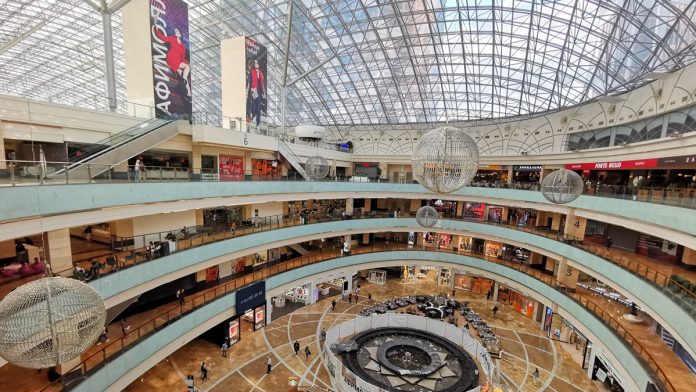Mr. Carlos Martinez, Director of Research and Consultancy, Knight Frank Thailand said, “Thai consumption has almost doubled in the past decade. Rising local income, increasing foreign tourist expenditure and better infrastructure have driven the expansion of the Bangkok retail space. The total supply of Bangkok retail space in 2020 was just under 9 million square metres from which shopping malls accounted for over 60% of the total retail space. The Bangkok retail supply has increased at an average annual rate of 6.1% in the past ten years.”
“The retail market keeps expanding as indicated by the new supply projected from 2020. Developers announced plans that will see the supply of retail space continue to increase every year, within a total projected new supply of about 1.4 million square metres planned to come on stream by 2023, an increase of 16% of the total supply of retail space. New supply will be built in the category of shopping and community malls, especially in the suburban area, fueled by the ongoing urbanization along with the extension of the mass transit system lines, and also partly due to the lack of suitable plots of land coupled with the high competition in the downtown area.”
“When looking at the retail GFA per capita as a proxy for retail density, in broad terms, the data suggest Bangkok with a retail space GFA per capita of 0.6 sq.m., is the closest to oversupply when compared to other cities in the region. Especially when considering that the level of retail that can be supported in any area also needs to take into account the number of tourists and consumer expenditure levels. Based on the estimates, Hong Kong and Singapore rank the highest in this respect, as it could be expected given their status as top shopping destinations in the region, as well as higher income per capita. Ultimately retail GFA per capita is insufficient by itself to indicate capacity limits but is still a useful index to track for early warning signs of overdevelopment.”
Graph 1: Retail GFA per Capita (Shopping Mall and Department Stores)

Source : Knight Frank Thailand
“Yet, the average occupancy rate has been within a healthy range of 92%-94% in the past five years, signaling a high level of stability in the market. Average asking rent has been stable for the past four years, after experiencing high increases in previous years. It is not expected to see asking rent rises over the short term. In fact, major retail operators reported falls in rental revenues between 20%-30% as a result of rent waivers to assist tenants during the lockdown period in 2020. This also helped operators to maintain a high level of occupancy, which is crucial for any retail center. “
Graph 2: Bangkok Retail Supply and Occupancy Rate

Source : Knight Frank Thailand
“Consumer confidence went down signaling a more reserved period of spending due to projections of slower economic growth. However, this sentiment has yet to translate into activity, as retail sales partially recovered rapidly after the end of the closure period. The consumer expectations about the economy measured by the consumer confidence index (CCI) drastically dropped from about 70 in early 2020 to a record minimum at 47 in April 2020 with a timid recovery up to 52 in November 2020. Similarly, the retail sales index that measures the demand for goods and services also dropped from 260 in 4Q 2019 to a minimum of 198 in 2Q 2020 to partially recover to 238 in 3Q 2020.”
Mr. Martinez concluded “in 2020, consumers have been spending less money because of the global pandemic, which has affected the Thai economy and has contributed to a decline in consumer purchasing power. Additionally, international tourist expenditure in 2020 was only about 16% of the 1.9 trillion in 2019, also in line with the projections expected in 2021.”
“Despite the partial recovery in the second half of 2020, the prospects for the immediate future of the retail business depend on the extent of the ability of the Thai government to stimulate the economy where purchasing power and consumer confidence is flagging due to the global pandemic in 2020. The government has announced plans to boost consumer spending during 2020, however it can only have a short-term impact on retailing. Without a recovery of the global economy, and the influx of international tourists, it is unlikely that purchasing power will return to the Thai market strongly in 2021.”
“In the mid-term, retailers’ sales volume might be negatively affected by the high household debt level to GDP which is expected to be in the line of 88-90% by end of 2020, 8-10 p.p. higher than that in 2019, the highest since 2003, and among the highest levels in Asia.“
“In the long run, say 5-10 years, the increasing penetration of e-commerce, which accounted for 3%-4% of the total retail sales, is expected to rocket to easily reach levels of 20%-25% similar to those in the UK, or The Netherlands, especially in a certain type of goods such as consumer goods, health & beauty, computers, and electric appliances. New retail developments should be designed in line with this trend, and existing ones will have to optimize their tenant mix most likely by increasing the share of retail space towards food & beverage, and entertainment to attract visitors. Operators should leverage on new technologies to capture data on their consumers that would help them to better design their spaces. Also, the availability of in-store information would increase sales performance as statistics from Google shows that over 80% of consumers will shop in-store if they know the products they want are available immediately. This also relates to retailers adoption of omnichannel strategies, being Apple store a good example. Other innovations would include incorporating facial recognition technology, magic mirrors, or virtual reality to enhance the shopping experience. For new future retail centers, developers should plan the retail floor area as a response to perceived demand instead of the maximum GFA permitted by regulation. Bigger is not always better.”



















